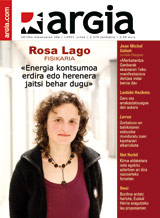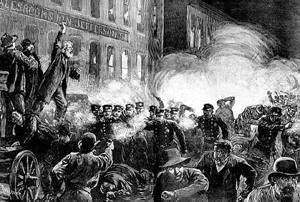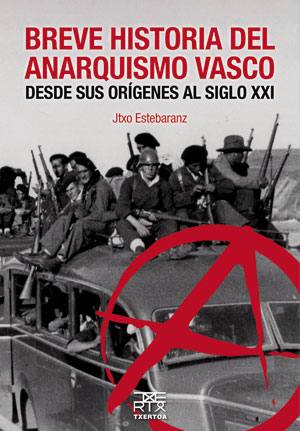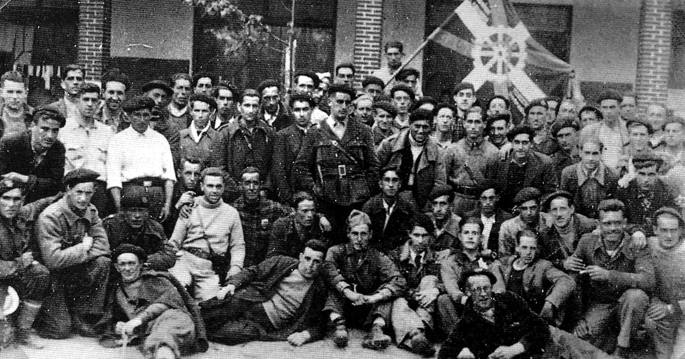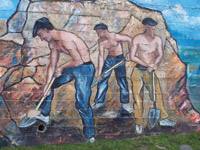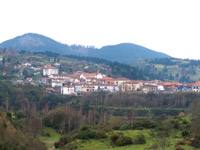Iron starvation wound the mountain
- “The planes have left us the sky broken,” chanted Txuma Murugarren. And that's what I thought when we came down from the funicular of Larreineta and headed towards La Arboleda, where the miners left us the high of the Triano, in the area of Black Peñas. It was at the time of iron fever. From then on, the pit is still there and the well is here, there is nothing else in the vast expanse. The only trees are bananas from the alameda that reach the church of La Arboleda.
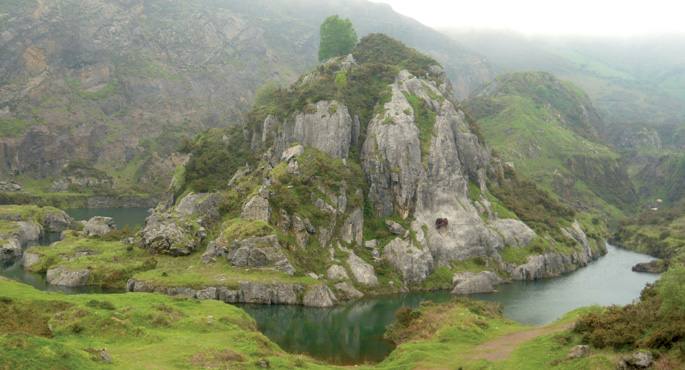
The place provokes emotion. There is also a desolation point in the area. The grandeur of green areas and rocks makes you feel small. Whether it's on the left or on the right of the road, it doesn't matter; the only thing that varies is the perspective that you have when you look down. If you go on the left of the road from Larreineta to La Arboleda, the intense green color of the well will surprise you; the water has traveled the rocks, although it is paralyzed in the artificial lake. Coming down the right side of the road, you see the infinite precipice, the downhill road to the Valley of Trapagan, and then, for another infinite hole, the downhill road to the Gallarta district of Abanto. But that's behind La Arboleda.
We arrived at the Concha II mine with a new road that descends to the largest section of land by the golden years of iron, which since 2003 is pending the declaration of cultural good. Its depth has also devoured the sea level; 200 meters lower in its day, when the miners sought iron, abandoned the surface mining and started working underground.
Funiculi funiculá
To see all of this, we first have to go up to Larreineta. To do this, we will take the funicular in the Escontrilla district of Trapagaran (you can go up by road, optionally, by BI-3755). It's not as well known as the Funiculi that was made in 1880 to climb Mount Vesuvius, but it's also possible to sing to him the famous Luigi song Denza.La, which goes up and down every half an hour, and I've taken the
license to call it that way, because it's actually a platform on a sloping plane over which the train wagon runs. Since 1926, it has been exceeding 400 meters of altitude. In that year he made for the first time a journey of 1,179 meters, and then, like today, very slow, very slow. Halfway, we will cross with the other baget that comes down, because to do so the lane is bent. The curious thing is that you don't see all the way down or up, because the particularity of this funicular is the curve that you have on the path. If you are travelling with the “Barik” card, remember that you do not have to pass the ticket to the departure. I did it and paid twice the same trip.
Testimony of ancient struggles
Upon arriving in the Larreineta neighborhood, we receive the church of Santa Barbara. The refuge of the miners has a large mural that represents the barrenors at their entrance, and on the next plate you can read the verse of Fidalgo and Aja: “I bring the red shirt of blood from a colleague; I bring the broken head that was broken by a Barreno; Holy Barbara blessed patron of the miners.” An old photo reminds of the first general strike of the miners, in which the parishes of the area joined the workers’ movement.
This whole story is gathered at the Museum of Mining in the Basque Country, in Gallarta. What remains in La Arboleda is nothing more than a scraped place; sometimes you also see sculptures made in red iron: in a time of cylinders you can read the poem of Aresti sung by Mikel Laboa: I will defend my father's house... Also in the rock that remains in the center of the lake, a gigantic piece of rolled iron has been placed, as if trying to remember what they had pulled out of the rock. We'll also see a sculpture called Hunger, a giant fork on a rock, a red iron of four molars digging the stone.
This is the trail of iron fever on the kilometer from Larreineta to La Arboleda. There is no railway in the area, but there are leftovers of sloping plane in the park enabled at the height of La Arboleda. On the contrary, from the interpretation centre of Peñas Negras you can make a journey of almost ten kilometres – sixteen by road – that in one section follows the old railway to the ferreria of El Pobal, in Muskiz.
Bilbotik Meatzalderantz joanez gero, lehenengo Barakaldo herriarekin egingo dugu topo. Merkatalgune erraldoiek edota Bilbao Exhibition Centrek, besteak beste, betetzen dituzte gaur egun bertako lurrak. XIII. mendera arte, berriz, nekazaritzatik bizi ziren barakaldarrak... [+]
Bizkaian badira bi lurralde (bakarra ote?) beste guztiek baino askoz ezezagunagoak eta baztertuagoak daudenak: Enkarterria... [+]
Jon Torner jontorner@argia.eus
1889az geroztik, maiatzaren 1ean munduko langileria kalera atera ohi da bere aldarrikapenak entzunarazteko. Urte hartan II. Internazionalak egun hau Langileen Nazioarteko Eguna izendatu zuen eta urtez urte, maiatzaren lehena iristean... [+]







